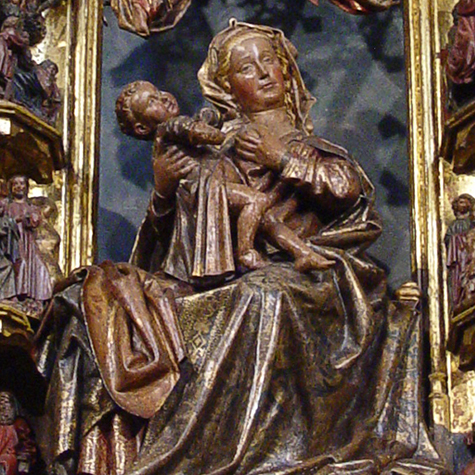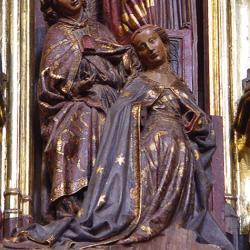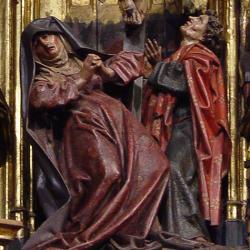Catalogue
ALTARPIECE OF OUR LADY OF BETHLEHEM
STYLE
The altarpiece of Our Lady of Bethlehem represents a moment of outstanding interest in the general woodcarving panorama in the Brussels manufacturing source that was going through a period of renovation in the mid-XV century. This work partly echoes these novelties: the figure of the Virgin who lends Her name to the work, for example, has an emphatic volume that, in turn, confers great presence. The density of pleats and folds of Her robes and the way they seem to concentrate at the foot of the figure contribute to this impression, as do the treatment of the albs of the angels crowning Her and the flowing folds of the sleeves of the figures in the Annunciation scene. The overlapping arrangement of these figures, such as those of the Virgin and St. John and the way they gather around the Cross of Calvary, all create a sensation of real space that was completely unknown of till then.
Regarding the expressiveness of the figures, the dominant serenity in the figure of the Virgin and the same expression in the Annunciation contrasts with the dramatic expression reserved for the Crucifixion that is patent in the tense stance of the Virgin, the touching expression on the face of St. John and the agitated fluttering of the loincloth of Jesus.



